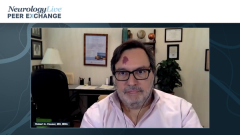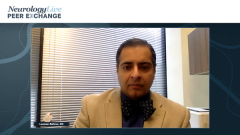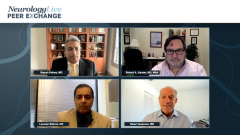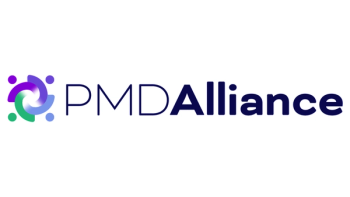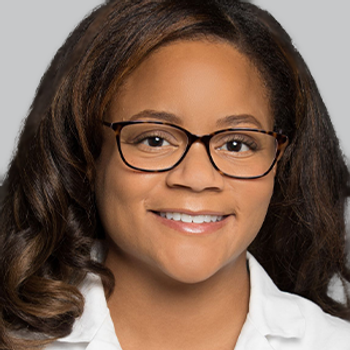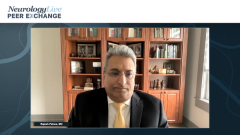
Initiating Treatment for OFF Episodes in Parkinson Disease
Rajesh Pahwa, MD, provides insight on initiating treatment after the manifestation of OFF episodes and reviews current treatment options for Parkinson disease.
Episodes in this series

Stuart Isaacson, MD: Raj, how soon after you recognize OFFs do you think treatment to reduce OFFs should be begun? And of all the different classes of treatments that we now have available, can you talk to us a little about how you view those classes individually or grouped between pre- and postsynaptic, or dopaminergic or non-dopaminergic, or GI [gastrointestinal] absorbed and non-GI absorbed? How do you wrap your head around all the different options we have? And tell us about the mechanisms and how you think about getting some.
Rajesh Pahwa, MD: How often have I, finally through education, taught my patient to recognize OFF, they recognize the OFF and I tell them, maybe we should make some changes in your medicine so that we can eliminate the OFF. And the patient saying, “Well, I am having OFF but it doesn’t affect me, doesn’t bother me. I’m not ready to change any medicine at that time.” Which is fine. And we have won the first battle by having the patient recognize the OFF. And I tell them, “Maybe before you come back for your next visit, this may become more obvious to you, maybe more severe to you. You need to call and come in earlier rather than wait for 6 months because I know this is going to get worse over time.” That’s the other thing. Once a patient has OFF time, which they’re already taking levodopa for, one of the things we often look at doing is, can we extend the number of doses they are taking? If they are taking 3 doses a day, can we go to 4 doses a day? The challenge behind going up on doses is the compliance does get less once we start increasing the dosing. But at the same time, a lot of patients are like, “No, I don’t want to add a new medication. I can take 1 additional pill during the day if that’ll help me eliminate my OFF.” Which is perfectly fine if that’s what the patient does. This is a time where we need to have more and more conversation with our patients to discuss the different options available. Increasing the dosing frequency is an option, but they need to realize if they’re not compliant with it, it’s not going to eliminate their OFF. We can switch them to extended-release capsules, that’s definitely an option for them. And again, some patients may say, “That’s too expensive for me, are there other treatment options?” We have dopamine agonists. Usually if a patient is young, having a lot of dystonia, I may lean towards adding a dopamine agonist for them. In an elderly patient, maybe 70, 80 years old, maybe having some cognitive issues, maybe being a little orthostatic, hypertensive, I may hold off on a dopamine agonist and use some other medication for them. We have COMT [catechol-o-methyl transferase] inhibitors, we have MAO-B [monoamine oxidase type B inhibitors] for some of these people. And I look at it as agonists being a little bit more potent but also having more side effects compared to using MAO-B or COMT inhibitors. Then now we also have an A2A antagonist, istradefylline [Nourianz]. And that’s another option where you can use it for treating OFF time. And we earlier discuss about a patient who has some degree of dyskinesia as well as OFF time using an NMDA [N-methyl-D-aspartate] antagonist, whether it’s amantadine or amantadine ER [extended release], would definitely be another option to treat. It’s important to remember just because we use a drug from 1 class doesn’t mean we cannot add a drug from another class. We very well could have a patient who is taking levodopa, dopamine agonist, your MAO-B inhibitor, even NMDA antagonist just to reduce their OFF time and dyskinesia, which can happen in some patients. The other option is using on-demand therapies. I look at using on-demand therapies once my patients start having OFF time. Even in that patient I gave you an example of earlier on who recognized the OFF time but doesn’t want to add a medication, I may say, “Here, if you want to have something on demand for your bad days, you could definitely have that with you. You don’t have to use it every day. You don’t even have to use it once a week.” I discuss on-demand therapies just like headache patients have migraine headaches. Doesn’t mean that they need to take their medication every day. But when they have a migraine headache, that’s when they use this on-demand therapy. And same thing in our patients, when you have OFF time, whether we add adjunctive therapy or not, you have this on-demand therapy that you can still use to eliminate that particular OFF that you’re having. Adjunctive therapies reduce OFF time during the day. But with on-demand therapies, the patient can know, I’m in an OFF state. I use my on-demand therapy and once this medicine works in 10, 15 minutes, I will not have the OFF after that. And that is the advantage of on-demand therapy. If you look at the number of medications that are available when we talk about COMT inhibitors, we have 2 medicines: entacapone [Comtan] is available with then which you have to use with each dose of the medication or you can use Ongentys [opicapone] which you can use it once a day. Same thing with MAO-B inhibitors. We have 3 MAO-B inhibitors that can be used. You have selegiline. You have rasagiline. Plus, you have safinamide available. Again, when we talk about categories of drugs, these categories have multiple medications available. And if a patient has side effects with 1 medication, we have the option of trying a different medicine. But when we talk about treating more the fluctuations, we need to start thinking about using adjunctive therapies, using on-demand therapies. And when we cannot manage with medications, thinking about surgical therapies such as deep brain stimulation or carbidopa/levodopa enteral suspension.
Transcript Edited for Clarity
Newsletter
Keep your finger on the pulse of neurology—subscribe to NeurologyLive for expert interviews, new data, and breakthrough treatment updates.

